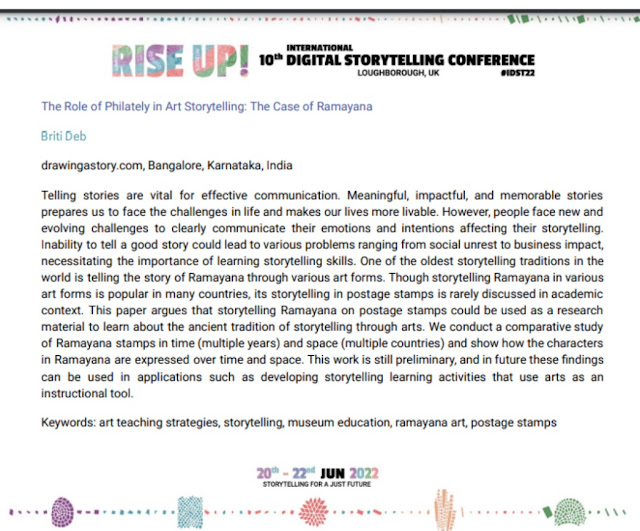I am thrilled to announce that my article titled "The Role of Philately in Art Storytelling: The Case of Ramayana," has been published in the prestigious 10th International Digital Storytelling Conference at Loughborough University, UK. This article offers a unique perspective on the use of philately in art storytelling, specifically in the context of the epic tale of Ramayana.
Through this research, I explored how postage stamps can serve as a powerful tool for conveying cultural heritage and storytelling, offering a fresh perspective on the traditional methods of art storytelling. I look forward to continuing to explore the intersections of philately and storytelling in the future.
https://storytellingacademy.education/wp-content/uploads/2022/06/DST-Programme-20-22-June-2022-FINAL.pdf











